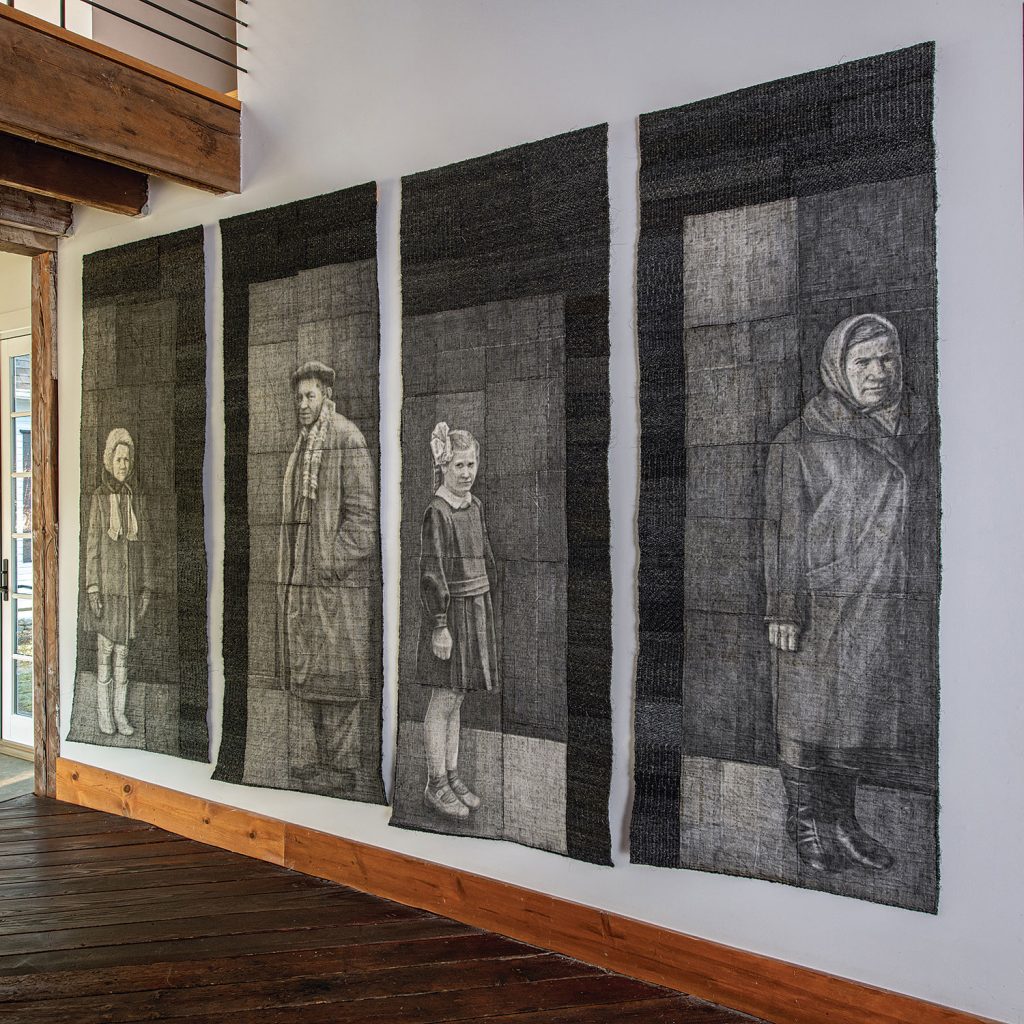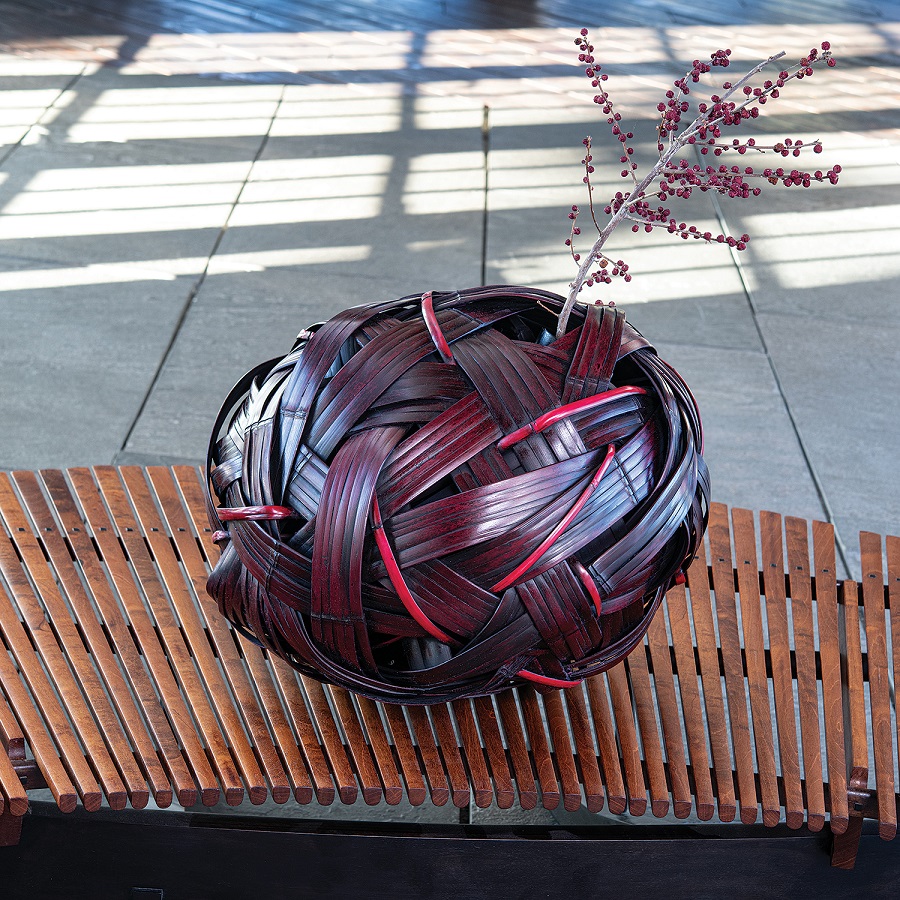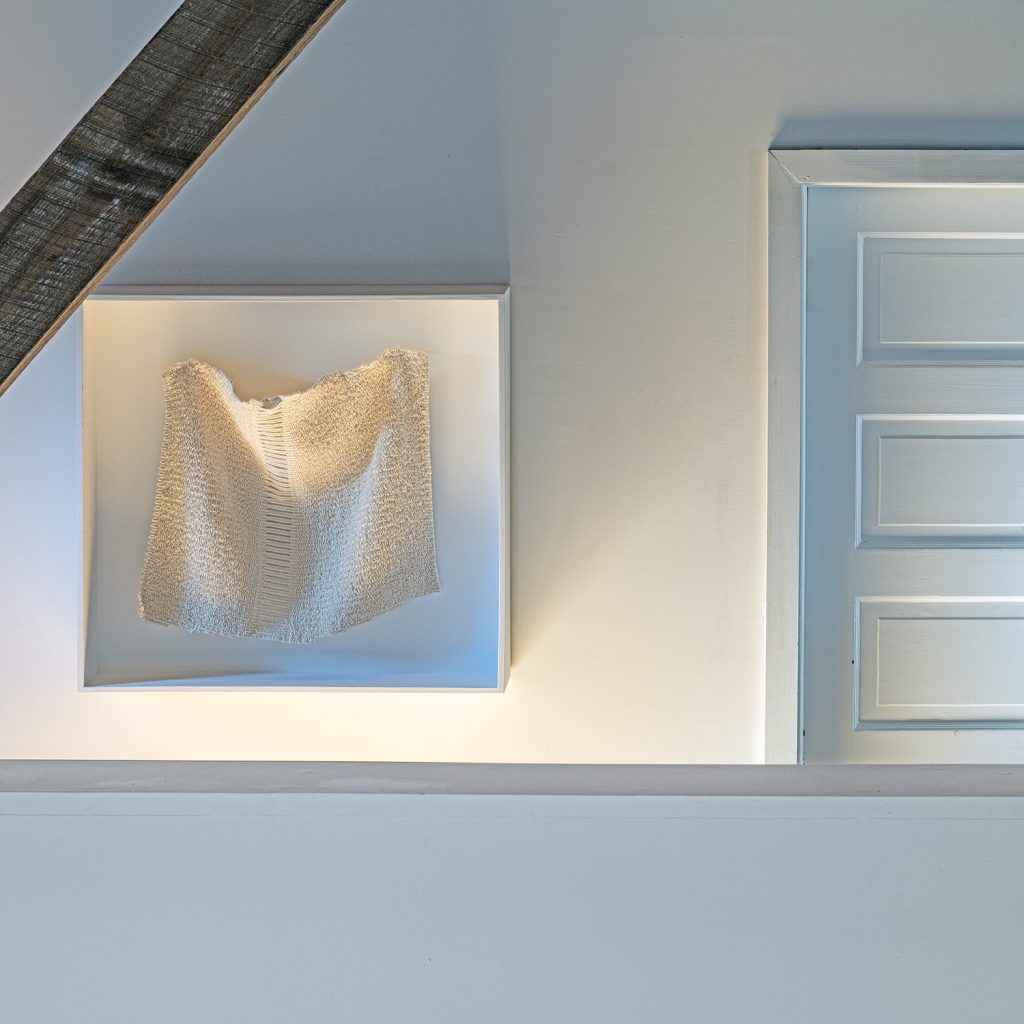As we settle into fall, things have not stopped heating up in our neck of the woods! This past month, we’ve been busy prepping for our Fall Art in the Barn exhibition and introducing you all to new artwork from artists all across the globe. Today, we’re recapping what we’ve brought into the mix throughout September.

To start off our series, we bring you Waiting 1-4, which was crated by Ukrainian artist, Aleksandra Stoyanov. This specific collection was the result of some of the unimaginable circumstances that this Stoyanov has experienced throughout her life.
This artwork’s inspiration dates back to the 1990s, after Stoyanov immigrated to Israel amid the worsening anti-semitism in Ukraine where she was born. Each panel in this collection stands nearly eight-feet tall and incorporates the image of a Ukrainian person drawn in pencil and woven in cloth.
This work was woven from Stoyanov’s own handmade threads of raw wool and portrays a deeply emotional quality.

This next piece was created by internationally acclaimed artist, Jiro Yonezawa. Yonezawa has been paving the way with his innovative bamboo craftsmanship for nearly 40 years.
His artwork can often be recognized for the contrast of disciplined formality in technique and natural freedom in form, which Yonezawa creates through exploration of traditional techniques.
When asked about his work, Yonezawa said:
“Bamboo basketry for me is an expression of detailed precision. In each basket there is the contrast of disciplined formality in technique and natural freedom in form. There is an element of intrigue and an element of complexity for what lies beyond form. These baskets represent a search for the beauty and precision in nature and a way to balance the chaos evident in these times.”

Our next piece was created by Slovenian artist Anda Klancic. Klancic has been recognized internationally for her use a combination of innovative embroidery techniques, many of which are patented under her name, allowing her to meticulously blend metal with cloth cotton or tree bark to fashion abstract pieces that crystallize the aesthesis of nature.
Klancic’s work can often be identified from her innovative and creative use of the machine-embroidered lace technique, which she skillfully combines with experience from other disciplines like photography. Often, her work attempts to express the relationship between humanity and nature.

Last, but not least, we brought you artwork from the late Micheline Beauchemin of Canada. Beauchemin was and still remains a major figure in visual arts – best known for monumental tapestries and theater curtains, as well as works of embroidery and stained glass, costumes and paintings.
As a weaver, Beauchemin’s repertoire of materials included unique combinations of handspun wool, silk and other natural fibers, as well as nylon, aluminum, and gold and silver threads.
As always, we hope you enjoy viewing and learning about these talented contemporary artisst. If you like what we highlighted throughout September; we keep them coming every week, so stay tuned!
As we approach October, make sure you mark your calendar for our upcoming Art in the Barn event, Allies for Art: Work from NATO-related countries (October 8-16, 2022), it’s an event you won’t want to miss! Click here for more information and to reserve your spot.


Art & Identity: A Sense of Place
In our 2019 Art in the Barn exhibition, we asked artists to address the theme of identity. In doing so, several of the participants in Art + Identity: an international view, wrote eloquently about places that have informed their work. For Mary Merkel-Hess, that place is the plains of Iowa, which viewers can feel when viewing her windblown, bladed shapes. A recent work made a vivid red orange was an homage to noted author, Willa Cather’s plains’ description, “the bush that burned with fire and was not consumed,” a view that Merkel-Hess says she has seen.
The late Micheline Beauchemin traveled extensively from her native Montreal. Europe, Asia, the Middle East, all influenced her work but depictions of the St. Lawrence River were a constant thread throughout her career. The river, “has always fascinated me,” she admitted, calling it, “a source of constant wonder” (Micheline Beauchemin, les éditions de passage, 2009). “Under a lemon yellow sky, this river, leaded at certain times, is inhabited in winter, with ice wings without shadows, fragile and stubborn, on which a thousand glittering lights change their colors in an apparent immobility.” To replicate these effects, she incorporated unexpected materials like glass, aluminum and acrylic blocks that glitter and reflect light and metallic threads to translate light of frost and ice.
Mérida, Venezuela, the place they live, and can always come back to, has been a primary influence on Eduardo Portillo’s and Maria Davila’s way of thinking, life and work. Its geography and people have given them a strong sense of place. Mérida is deep in the Andes Mountains, and the artists have been exploring this countryside for years. Centuries-old switchback trails or “chains” that historically helped to divide farms and provide a mountain path for farm animals have recently provided inspiration and the theme for a body of work, entitled Within the Mountains. Nebula, the first work from this group of textiles, is owned by the Cooper Hewitt Museum.
Birgit Birkkjaer’s Ode for the Ocean is composed of many small woven boxes with items from the sea — stones, shells, fossils and so on — on their lids. ” It started as a diary-project when we moved to the sea some years ago,” she explains. “We moved from an area with woods, and as I have always used materials from the place where I live and where I travel, it was obvious I needed now to draw sea-related elements into my art work.”
“I am born and raised in the Northeast,” says Polly Barton, “trained to weave in Japan, and have lived most of my life in the American Southwest. These disparate places find connection in the woven fabric that is my art, the internal reflections of landscape.” In works like Continuum i, ii, iii, Barton uses woven ikat as her “paintbrush,” to study native Southwestern sandstone. Nature’s shifting elements etched into the stone’s layered fascia reveal the bands of time. “Likewise, in threads dyed and woven, my essence is set in stone.”
For Paul Furneaux, geographic influences are varied, including time spent in Mexico, at Norwegian fjords and then, Japan, where he studied Japanese woodblock, Mokuhanga “After a workshop in Tokyo,” he writes, “I found myself in a beautful hidden-away park that I had found when I first studied there, soft cherry blossom interspersed with brutal modern architecture. When I returned to Scotland, I had forms made for me in tulip wood that I sealed and painted white. I spaced them on the wall, trying to recapture the moment. The forms say something about the architecture of those buildings but also imbue the soft sensual beauty of the trees, the park, the blossom, the soft evening light touching the sides of the harsh glass and concrete blocks.”